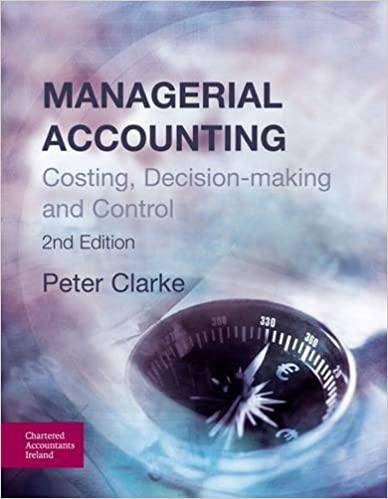Required information (The following information applies to the questions displayed below.) The Platter Valley factory of Bybee Industries manufactures field boots. The cost of each boot includes direct materials, direct labor, and manufacturing (factory) overhead. The firm traces all direct costs to products, and it assigns overhead cost to products based on direct labor hours. The company budgeted $10,105 variable factory overhead cost, $94,000 for fixed factory overhead cost and 2,350 direct labor hours (its practical capacity to manufacture 4,700 pairs of boots in March The factory used 4,400 direct labor hours in March to manufacture 4,500 pairs of boots and spent $17.500 on variable overhead during the month. The actual fixed overhead cost incurred for the month was $97,700. The Platter Valley factory of Bybee Industries uses a two-variance analysis of the total factory overhead variance. Required: 1. Compute the total flexible budget variance for overhead and the production volume variance for March. What was the total factory overhead cost variance for March? Indicate whether each variance is favorable (F) or unfavorable (U). 2. Determine the three components of the total flexible-budget variance for overhead (le, the variable overhead spending variance, the variable overhead efficiency variance, and the fixed overhead spending variance); In addition, show the production volume variance for March. Indicate whether each variance Is favorable (F) or unfavorable (U). 5 ints Book The Platter Valley factory of Bybee Industries uses a two-variance analysis of the total factory overhead variance. Required: 1. Compute the total flexible-budget variance for overhead and the production volume variance for March. What was the total factory overhead cost variance for March? Indicate whether each variance is favorable (F) or unfavorable (U). 2. Determine the three components of the total flexible-budget varlance for overhead ().e, the variable overhead spending variance, the variable overhead efficiency variance, and the fixed overhead spending variance); In addition, show the production volume variance for March. Indicate whether each variance is favorable (F) or unfavorable (U). Ask Print References Complete this question by entering your answers in the tabs below. Required 1 Required 2 Compute the total flexible-budget variance for overhead and the production volume variance for March What was the total factory overhead cost variance for March? Indicate whether each variance is favorable (F) or unfavorable (U). Total flexible-budget variance Production volume variance Total overhead cost variance Unfavorable Unfavorable Unfavorable Maqui Required 2) BOOK The Platter Valley factory of Bybee Industries uses a two-variance analysis of the total factory overhead variance. Required: 1. Compute the total flexible-budget variance for overhead and the production volume variance for March. What was the total factor overhead cost variance for March? Indicate whether each variance is favorable (F) or unfavorable (U). 2. Determine the three components of the total flexible-budget variance for overhead (le, the variable overhead spending variance, the variable overhead efficiency variance, and the fixed overhead spending variance); in addition, show the production volume variance for March. Indicate whether each variance is favorable (F) or unfavorable (U). ASK Print rences Complete this question by entering your answers in the tabs below. Required 1 Required 2 Determine the three components of the total flexible-budget variance for overhead (1.c., the variable overhead spending variance, the variable overhead efficiency variance, and the fixed overhead spending variance), in addition, show the production volume variance for March. Indicate whether each variance is favorable (F) or unfavorable (U). Variable overhead spending variance Variable overhead officiency variance Fixed overhead spending (budget) variance Production volume variance









